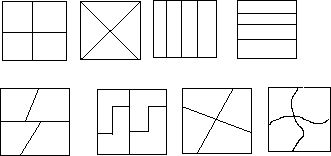
conformity

On hindsight the result of most creative progress seems often so simple that one wonders what all the fuss is about. This is probably the reason that creative work is so seldom documented. This books offers a number of creative approaches, however, it certainly does not presume to give all answers. The aim is to make you aware of how and where techniques can help to achieve a creative frame of mind. For example: a language is best learned in the native country. When learning it one is not (consciously) learning a language, but involved in survival, making the best of it and having a good and profitable time. Yet exactly in this way the language is learned. So it is with creativity.
It is best learned by trying it out and continuing to learn (especially from one's mistakes). It really means making new combinations which have not yet been made. One may think of the paperclip.
Creativity means investigating things and going new ways, as such it is the opposite of conformity. Accepting that if it can be done in one way, it can also be done in another way. And if it can be done in 2 ways it can be done in ..... and so on. It implies stepping out of one's own system and way of thinking. And more than anything else examining one's way of 'learning'. It starts from the premise that either everyone is right or everyone is wrong! Right or wrong are not important. The endless discussions about right or wrong usually prove little else than the verbal abilities of the contestants. One usually concentrates on one's own arguments, forgetting that either side may be wrong or right for that matter. Discussion shows little in the way of creativity. If it were to mean an exchange of viewpoints, it would be worthwhile. Education, training and culture determine our outlook. Creativity means that this is accepted and then effort is put into breaking out of the patterns. I want to illustrate this by means of an example. Draw a square and divide this in 4 equal parts.Then try it in a different way and then again. ......
The first division is usually by a straight cross or diagonal. The established pattern is chosen first, it is the known manner.
Going outside existing (imaginary) lines will make it normal to look in an 'abnormal' way. The new and original in a situation will be appreciated and 'seen'. Once it has been seen it seems so simple and it is, but one must dare to cross the lines. Actually it means looking with the open mindedness of a child and the knowledge of a grown up. Not impossible, as we were all children once.
Creative techniques show new insights, however, they must be used. So what really counts is the creative attitude, the willingness to experiment. The creative attitude therefore means systematic doubt if the present 'solution' is the only one.
When we continue trying we usually find new ways and even curved lines!
